On May 14, 2024, the City Council approved the city’s Housing Element for 2023-2031. This is an important document which outlines the city’s commitment to support building a minimum of 4,588 new homes over the next seven years.
In that same meeting, the City Council adopted changes to the Mobility Element of the Cupertino General Plan, to bring it in line with the Housing Element. The Mobility Element outlines strategies for managing our transportation network to accommodate the anticipated growth in housing.
On July 2, 2024, the City Council approved zoning changes to bring the City in compliance with state law, consistent with our Housing Element.
These three policy directions – the new Housing Element, the zoning amendments, and the amended Mobility Element – will have a huge impact on car traffic, transit, walking and biking in the City of Cupertino. In this article, we’ll go over the main changes that will affect how many cars you will encounter on the road, and what options residents will have to get around.
Increase in Car Traffic
The Housing Element will add a minimum of 4,588 new homes to the city by January 31 2031. The average home in Santa Clara County owns two cars. That means the city of Cupertino could see an increase of approximately 9,176 more cars in the next seven years. While not all these cars will be on the road at the same time, this would still result in a significant increase in traffic congestion.
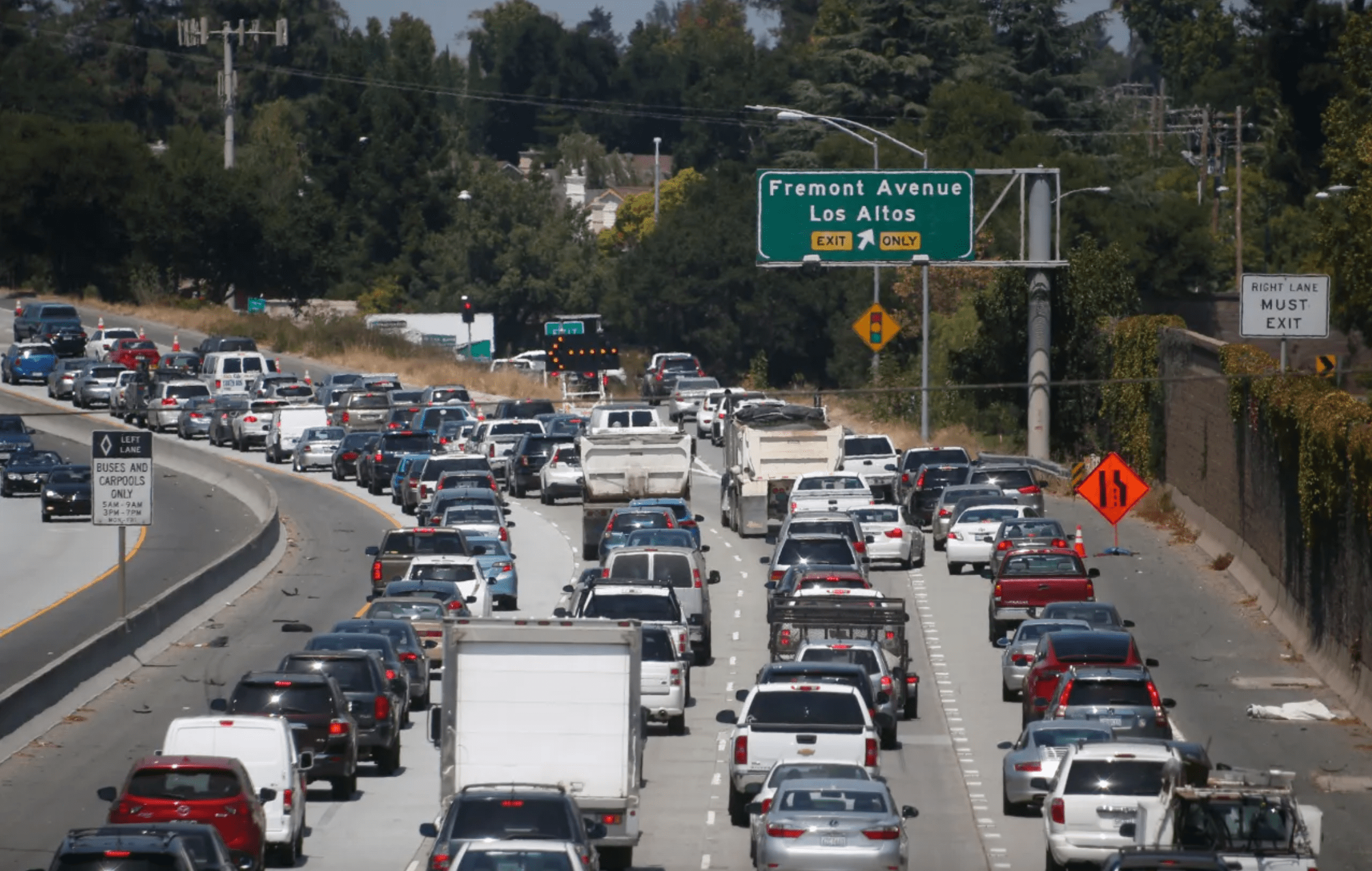
Car traffic in Cupertino is not just city residents. Most of the cars on our major thoroughfares are residents of neighboring cities commuting through our city. All the Santa Clara County cities combined have a Housing Element target of building about 130,000 new homes by January 31, 2031. That’s approximately 260,000 new cars added in the next seven years. Our roads are simply not ready to accommodate so many more cars. We must divert some of that traffic to transit, walking, and biking, to reduce car congestion on the road. Every resident who chooses to use transit, walk, or bike to their destination is one less car sitting in traffic.
There will be up to 260,000 new cars added by 2031. Every resident who chooses to use transit, walk, or bike is one less car sitting in traffic.
Increase in High Density Housing on Major Streets
Most of the priority housing sites in the Housing Element are located on major city streets and will have high density. The Housing Element creates two new Zoning Designations – R4 High/Very High Density, which will allow for 50.01–65 units per acre, and R4 Very High Density, which will allow for 65.01–80 units per acre. This means car traffic on major city streets will go up significantly.
Map of Cupertino showing the location of priority sites for new high density housing development.
Increase in Gentle Density in Residential Neighborhoods
The Housing Element encourages the development of “missing middle” gentle density in single-family residential neighborhoods by allowing duplexes to be built on corner lots and lots that share a property line with a lot that fronts a major street and is zoned and used for commercial or mixed use development.
The council approved a zoning amendment to reduce the minimum parking that is required to be provided in these new “missing middle” duplex lots from 3 covered and 3 uncovered parking spaces to 2 covered and 2 uncovered parking spaces. Developers can still choose to include more parking, if needed. R2 duplex zoned lots in the rest of the city retain the requirement for 3 covered and 3 uncovered parking spaces.
The zoning changes also create a new Townhouse Combining District zoning to streamline the process of adding townhouses as a buffer between single-family residential neighborhoods and higher density developments on major streets.
This will result in a modest increase in pedestrians, cyclists, and car drivers on small streets inside residential neighborhoods.

Increase in Number of ADUs
The city will continue to encourage the construction of ADUs throughout the city by streamlining the approval process and providing incentives where available.
While ADUs are starting to become more popular, the number of ADUs built in the city remains relatively small.
This will result in a very small increase in pedestrians, cyclists, and car drivers on small streets inside single-family residential neighborhoods.
Potential Risk to Parkland
All developments in the city have an open land preservation requirement. However, to enable more high-density affordable housing projects to be built, the city will evaluate the possibility of providing open space credits and will make a determination on this by June 2026.
Easy access to nature is critical to the quality of life of our residents and maintains our property values. We will be watching this closely to ensure the city continues to prioritize generous access to open land for all residents.
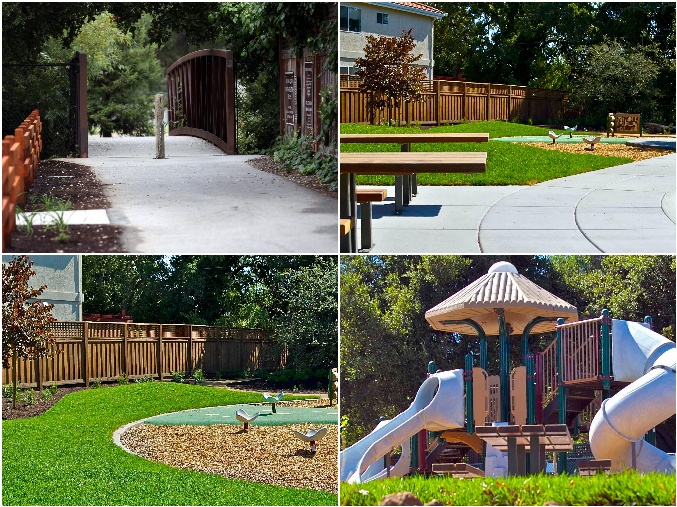
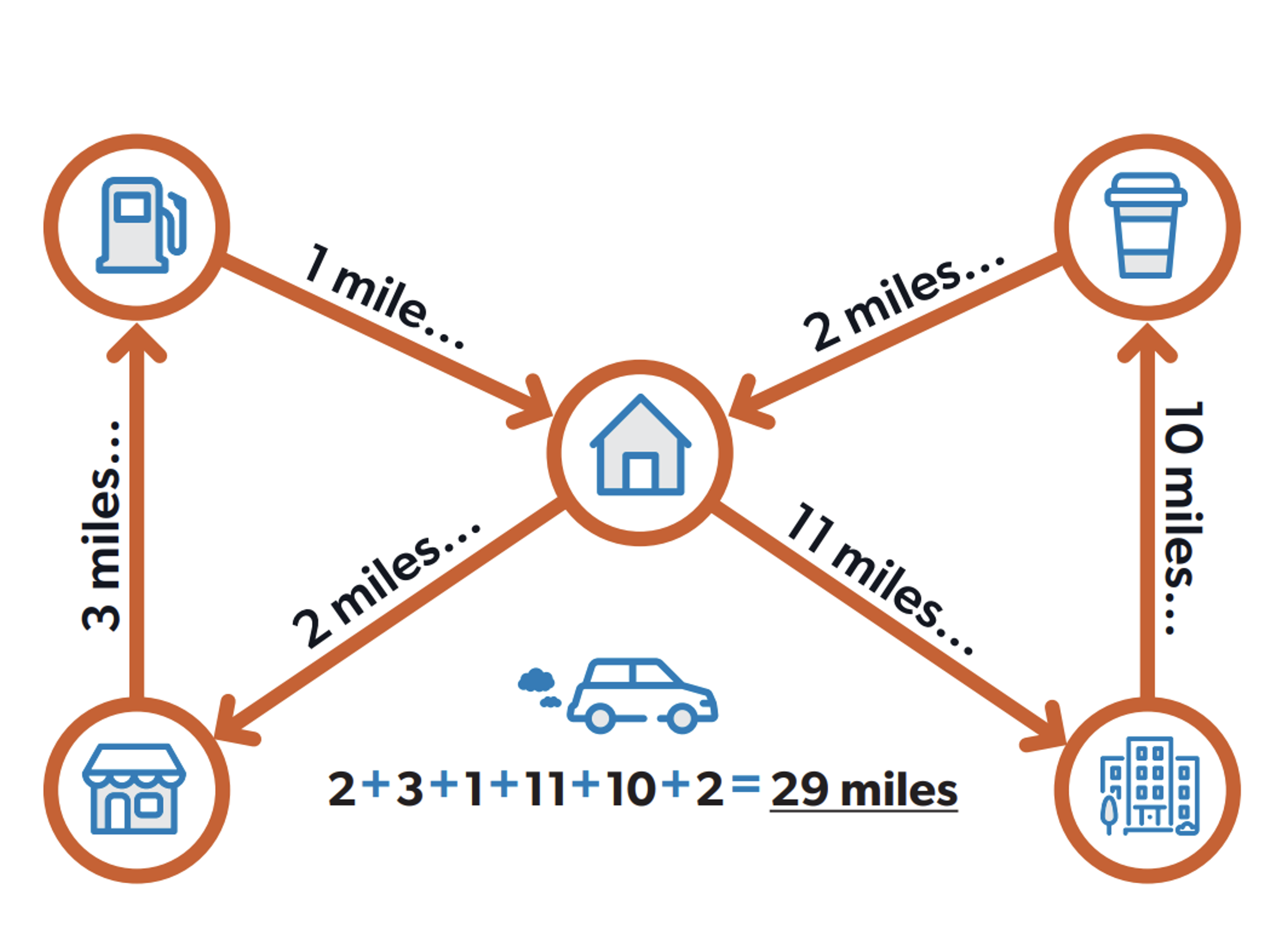
Increase Focus on Reducing VMTs
VMTs or “Vehicle Miles Traveled” is a measure of the total number of miles traveled by drivers of motor vehicles on city roads. In other words, it is a measure of the motor traffic in Cupertino.
The city will establish a framework for reducing VMTs at a city-wide level as well at the project-level for all new developments and re-developments. The framework is not yet defined but it could include measures such as implementing a city-wide bike share program, revisiting parking requirements in new developments, and increasing transit and car-share options.
Increase Interblock Connectivity
Since the 1950s, suburban developments have built residential neighborhoods as self-enclosed areas with many cul-de-sacs and few connections to their surrounding neighborhoods. This results in that sometimes, just to get to the next street over, residents have to travel a mile out to the main road and then back around. This reduces the walkability and bikeability of the city, especially for children and seniors. Cupertino’s revised Mobility Element will require new developments and redevelopments to connect with neighboring residential streets to allow pedestrians and cyclists to use the city’s smaller residential streets for short trips.
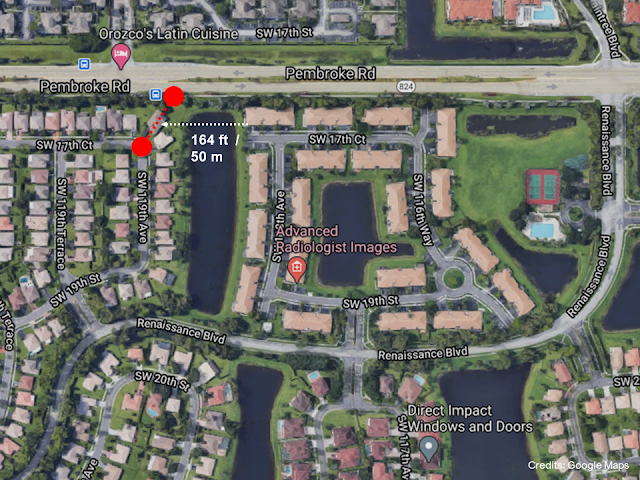
Walking distance to main road with interblock connectivity
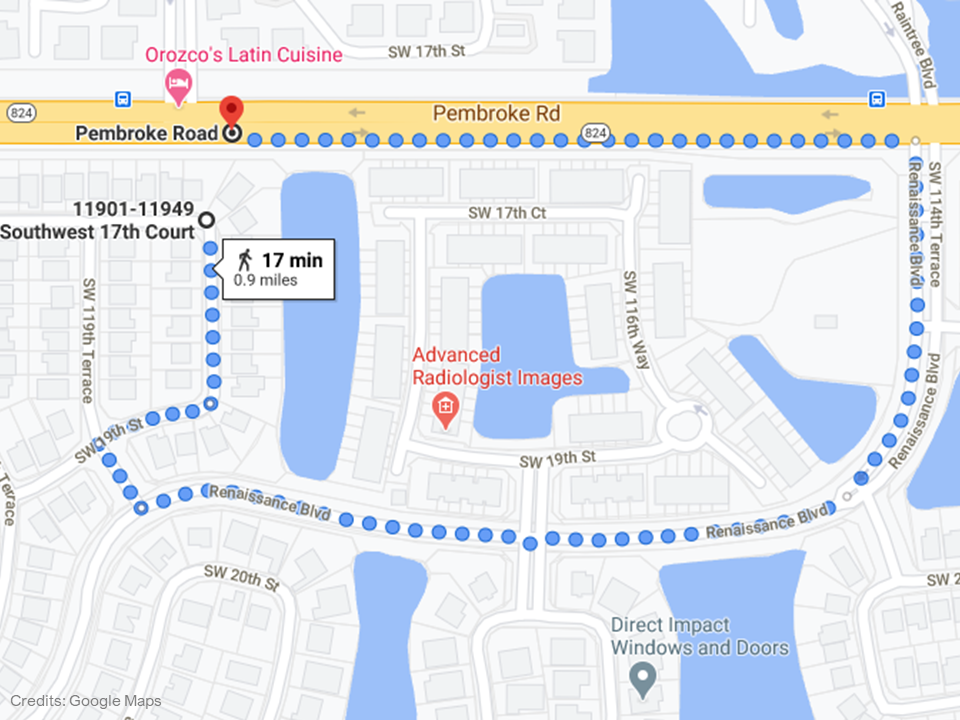
Walking distance to main road without interblock connectivity
Continue Support for SV Hopper
The city will continue to support a local micro-transit solution like SV Hopper, which has been hugely successful, especially among seniors and students, who often use it after school to get home or to their after-school activities.
Reduce Greenhouse Gas Emissions
The city plans a multi-pronged approach to reduce greenhouse gas emissions by improving traffic flow through infrastructure improvements and requiring new developments to provide amenities that encourage the use of transit, walking, and biking.
Conclusion
The city has made thoughtful amendments to the Mobility Element and zoning regulations to manage the anticipated growth in housing and traffic. While these are positive movements in the right direction, we remain concerned that it will not be enough. Transit availability in the city remains inadequate, very few major streets offer protected biking lanes, and many streets still don’t have sidewalks. We need a more urgent approach to building this infrastructure and diverting residents into these modes of transportation before Cupertino and neighboring cities add thousands of new homes and cars.

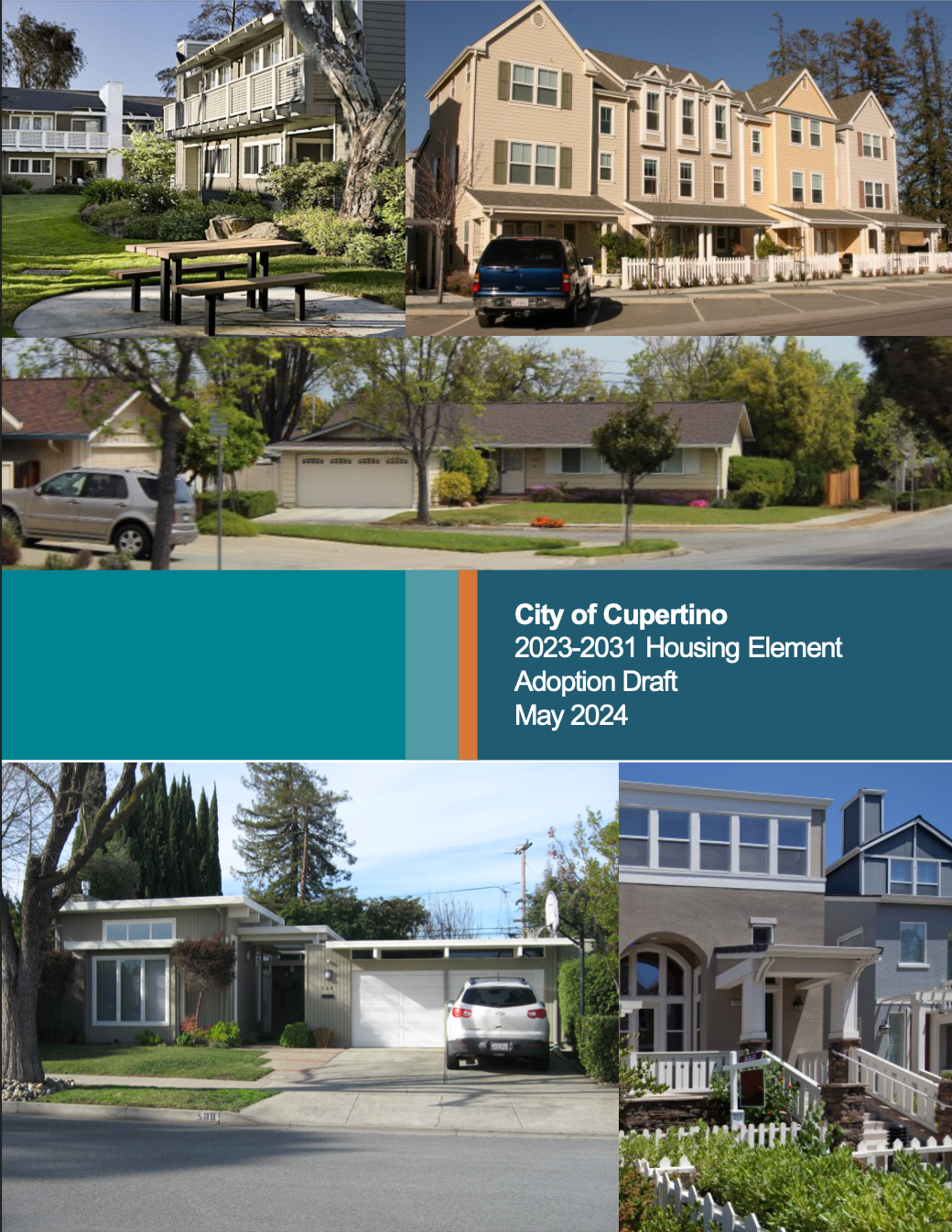
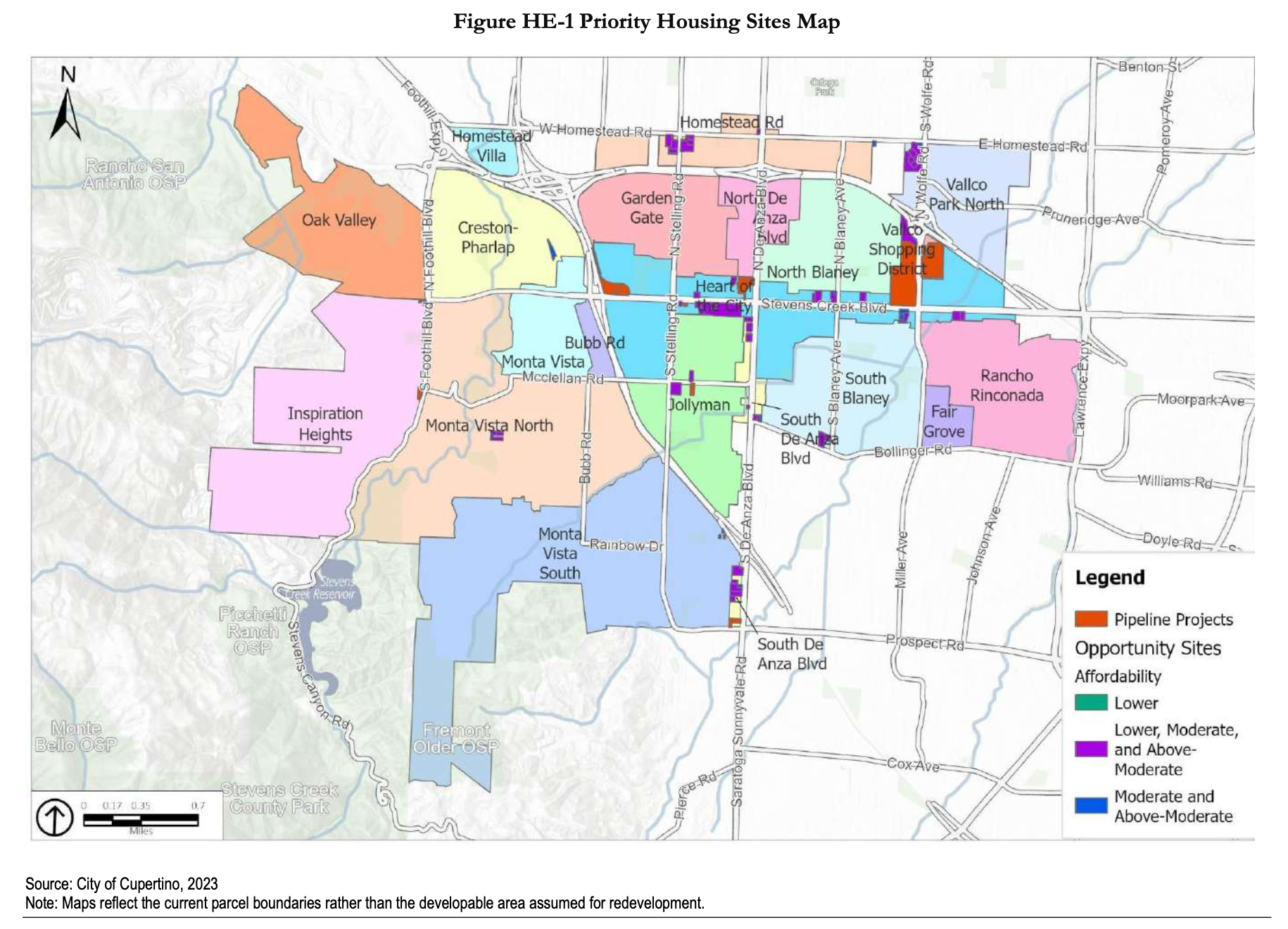
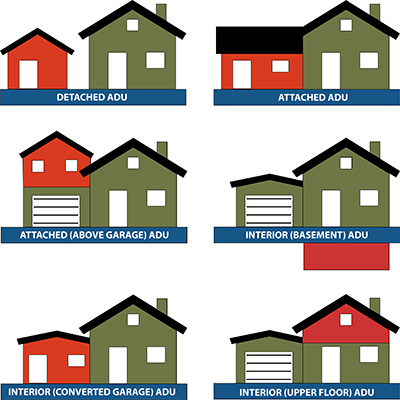
Plans to reduce VMT should conform to CA’s plan to achieve its 2030 climate-stabilization mandate, SB 32. The plan, as legislated in AB 32, is the CARB Scoping Plan. Appendix E and D focus on VMT reduction. Because there will still be so many internal combustion cars on our roads in 2030, CARB advises reducing per-capita VMT by 25% with respect to 2019. Again, that is by 2030. The Scoping Plan’s primary mitigation measures are pricing strategies and doubling transit service by 2030 with respect to 2019. The pricing strategies are for using parking and using roads. We need a means-based CA RUC to replace the CA gas tax that is value priced with congestion pricing when needed. Managed parking. Contact mike_bullock@earthlink.net, for details on “managed parking”. Clue: it increases economic equity and choice will it reduces the incentive to drive and therefore reduces VMT.
Please check out the proposal for Mary Avenue Villas, a project of homes on Mary Avenue between the dog park and the project that used to be the Oaks. The only way that they can build this project is to build next to the sound wall on May Ave, and extend out past the protected bike lane on Mary and into parking spots. Cupertino spent alot of money on the Matry Avenue project so that there is safe access to the bridge over 280. That is now possibly in jeopardy.
Thanks, Robert, for letting us know your thoughts! We’re watching the Mary Avenue Villas project carefully, and have given our input regarding makings sure the bike lanes stay uninterrupted. We also love the Mary Ave (Don Burnett) Bridge and how it makes getting over I-280 easy and enjoyable for walkers and bikers. We hope to see you on it soon!